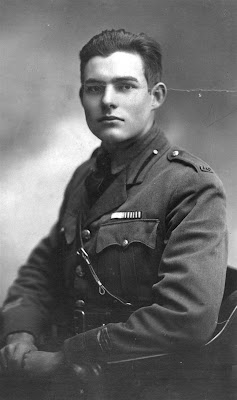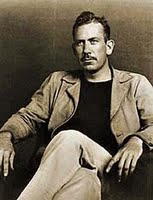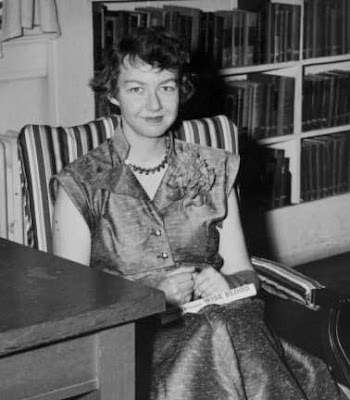Tracing the Roots of Your Favorite American Author, Part 1
Tracing the Roots of Your Favorite American Author, Part 1
Have you ever planned a trip around a theme? I’m not talking about a mountain climbing trip, a ski vacation or a shopping excursion, rather an out-of-the-ordinary adventure around the life of one or two of your favorite American authors. You’ll learn firsthand about their roots and get a closer look at what inspired them to create the works that have shaped America throughout the centuries. There’s really no better way to learn about American history than to travel to places where our most notable citizens have left their marks. So why not focus on writers, and while you’re at it see some beautiful towns you may otherwise never visit?

Ernest Hemingway
“Happiness in intelligent people is the rarest thing I know.”
The Old Man and the Sea is alive and well in the backpacks of high schools students all over America as well as in the minds of the parents of those students who read the short novel a generation earlier. Hemingway penned 7 other novels, including classics such as A Farewell to Arms, The Sun Also Rises, For Whom the Bell Tolls, Islands in the Stream and Garden of Eden and 4 novelettes. In addition, he wrote a play, and many poems and short stories that have been published in collections and anthologies. He even authored a textbook, The Green Hills of Africa.
Born in Oak Park, IL in 1899, Hemingway began writing at the age of 17 for a Kansas newspaper. He later served in the Italian Army and became an expatriate living in Paris, where he got his inspiration for The Sun Also Rises. Hemingway’s masterpiece, The Old Man and the Sea earned him the Pulitzer Prize in 1953 and a Nobel Prize in 1954. He spent time in Cuba with wife, Martha and in Key West with his wife and three children and summers in Wyoming and later Idaho. He suffered from many illnesses including depression and committed suicide in 1961 at his home in Ketchum, Idaho. Several other Hemingway family members took their own lives, including Ernest’s father, Clarence, two of his siblings and his famous actress granddaughter, Margaux. Ernest Hemingway was buried in Ketchum alongside his fourth wife, Mary.
If you really want to delve into the depths of this Nobel Prize winning author’s brilliant mind, plan a trip to sunny Key West, Florida, the southernmost point of the continental USA and one of Hemingway’s favorite places to write. Begin your pilgrimage at the Hemingway House and Museum, where the author once lived with his family. There are more than 60 cats on this property, many of whom are descendents of the cats Hemingway owned when he occupied the house. A number of the felines have six toes, polydactyls, just like their ancestors. Donations from organizations allow the museum to meet the high costs to feed and care for the cats. Inside the home you will find many of Hemingway’s original furnishings. One of the highlights is the two-story carriage house, containing the author’s writing studio. steinbeck.org/
Sloppy Joe’s was Hemingway’s favorite hangout in Key West, and it dates back to 1933, when prohibition was repealed. It is said that Hemingway is the one who encouraged the owners to change the name from Russel’s Bar to Sloppy Joes.
Take a ferry trip out to Dry Tortuga National Park. Hemingway spent many long hours fishing around the seven islands of the Tortugas. While there you can tour the historic Fort Jefferson and view the lighthouse of Gordon Key.
If you can stand the heat of a tropical summer, make your journey to Key West in July to attend the Annual Hemingway Days Festival. From rare collections of Hemingway Memorabilia to Hemingway look-alike contests, this is a fun event for any Hemingway enthusiast to experience.

John Steinbeck
“In utter loneliness a writer tries to explain the inexplicable.”
Known as the premier writer of America’s Great Depression, Steinbeck’s stories leave readers with the reality of despair like no other writer has done; yet, we always want to read more. Among his most celebrated works are: The Grapes of Wrath, Cannery Row, East of Eden, and Of Mice and Men. Steinbeck’s roots will take you to Salinas, CA, not far from Monterey and the real Cannery Row. Born in 1902, he later attended the local high school and went on to study at Stanford University, though he never finished. Like many writers, he originally struggled to get his stories published. He was awarded the coveted Nobel Prize for Literature in 1962. Biologist and dear friend, Ed Ricketts had a great influence on Steinbeck’s work, most obvious would be Cannery Row. Steinbeck had three wives and two sons. He died of heart failure in 1968 at the age of 66.
The Steinbeck Center is a great place to begin your journey into the life of one of the most fascinating American storytellers in history. This center in Salinas, CA is dedicated to preserving the author’s legacy and educating visitors about his life and works. In the Exhibit Hall are interactive displays, stage sets, a life size figure of Steinbeck, vintage photographs and more. There is also a Valley of the World Gallery, which focuses on the agricultural landscapes of Steinbeck’s works. Be sure to check out the Museum Store at the center as well.
Die-hard Steinbeck fans will not want to miss the annual Steinbeck Festival, which just recently completed its 29th year. Here you will find tours, lectures, films, performances and more, all part of a giant celebration of Steinbeck’s literary legacy.
Other Steinbeck attractions in Salinas include the author’s childhood home, a charming restored Victorian. It now houses a restaurant, aptly named Steinbeck House.
If you want to embark upon a self-guided tour, there is an excellent website to assist you called 93950.com. There is a map of Pacific Grove, and stopping points are marked to plan your tour. It will guide you to: the former house of Steinbeck’s sister, Esther Steinbeck Rodgers and her husband, Carrol; El Carmelo Cemetery, depicted in Cannery Row; the historic Point Pinos Lighthouse, mentioned in a number of Steinbeck’s works; the Great Tidepool from Cannery Row; the Pacific Grove Post Office, where biologist friend of Stenbeck, Ed Ricketts kept a PO Box; former site of the Old Methodist Church and Jewell Park, mentioned in Sweet Thursday; Holman’s Department Store, where Steinbeck bought a ledger and ink for pennies to write his To God Unknown manuscript; The former Scotch Bakery, from Cannery Row; the former Red Williams’ Gas Station, also from Cannery Row; Ed Rickett’s First Lab and Rickett’s Row; the Steinbeck Family Cottage, where the author worked on Of Mice and Men; Steinbeck’s Own Cottage, where part of The Sea of Cortez and The Forgotten Village were created; Elizabeth Hamilton’s Cottage, former home of Steinbeck’s Grandmother, where the Colossus of Gold Statue once stood; Hopkins Marine Station of Stanford University, where Steinbeck and his sister, Mary once played and took courses in zoology and English; and last but not least, the infamous Cannery Row, former home to smelling fish canning warehouses.
Eugene O’Neill
“Life is for each man a solitary cell whose walls are mirrors.”
The only American playwright to win a Nobel Prize for literature, Eugene O’Neill’s plays were vastly based upon tragedy. This included his best known play from 1941, Long Days Journey Into Night, about a dysfunctional family’s challenges with addiction, deception, resentment and regret. Among his other 31 full-length plays, he is perhaps also best known for Desire Under the Elms, Strange Interlude and Mourning Becomes Electra. In addition he wrote 19 one-act plays. Four of these were filmed together in 1940 as The Long Voyage Home. He was awarded the Pulitzer Prize for four of his plays: Beyond the Horizon, 1920; Anna Christie, 1922; Strange Interlude, 1928; and Long Days Journey Into Night, 1956.
Born in New York City in 1888, O’Neill was introduced to the theater at birth by his actor father, James. A combination of the instability of his father’s life as in the theater and his mother’s drug addiction, O’Neill faced many challenges as a young boy. By 1916 a group of his one-act plays were performed in a theater in Provincetown, MA. For only one year, he attended Princeton University. Following that, he spent six years struggling with no direction, abusing alcohol and fighting tuberculosis. It was during a-six month stay at a sanitarium that he reevaluated his life, cleaned up his act and began to write his masterpieces. But throughout his life there always seemed to be strife. He had three wives (one who committed suicide and two whom he divorced). He disowned one of his three children, daughter Oona, because she married the famous Charlie Chaplin, who was the same age as Eugene. O’Neill, who battled many illnesses including Parkinson’s, died in 1953 in a Boston Hotel.
The Eugene O’Neill Foundation in Danville, CA, serves to preserve the playwright’s great works. It was here, just outside of Oakland, that the author lived with his third wife, Carlotta. The Tao House, where the couple lived is open for tours. It combines elements of the California ranch style and Chinese influences. O’Neill found the views from here of the San Ramon Valley to be very inspiring. He spent a great deal of time writing here in isolation. There is a visitor’s center here with changing exhibits and a bookstore selling the author’s works. The National Park Service has named this “museum” a National Historic Site, and the house can only be toured with advanced reservations from the park service.
Plan your trip to Danville so you can see one of O’Neill’s plays, or one written by another author greatly influenced by O’Neill, at Playwrights’ Theater.
There is also an annual O’Neill Festival in Danville with plays, lectures about O’Neill and walking tours of the beautiful town of Danville.

Flannery O’Connor
“I find that most people know what a story is until they sit down to write one.”
Flannery O’Connor is the author of my favorite short story of all time, Good Country People. Born and raised in Millidgeville, GA, O’Connor was a true Southern writer, inspired by her small town life. She was born in 1925 and was the only child of Catholic parents. Her Father, Edward was a realtor and her Mother, Regina Cline came from a wealthy GA family. was known for her well-developed characters, many of who were ugly or disfigured in some way. She wrote two novels, Wise Blood and The Violent Bear it Away, as well as 32 incredibly captivating short stories. I recall reading her works while in college and discussing the irony in her stories. In 1964, sadly she passed away at the young age of 39 from lupus, the same disease that claimed her father’s life. She was never married. The Comforts of Home website provides a great deal of information regarding the author’s life.
If you make your way to the small picturesque Southern town of Millidgeville, GA, located northeast of Macon, you can view her country home, Andalusia. In the published letters of Flannery O’Connor, she talks of this estate where she lived. It was willed to the author’s mother by her physician brother, Dr. Bernard Cline. If you visit, you can take a self-guided tour and watch a movie adaptation of the author’s story, A Displaced Person.
The Sacred Heart Catholic Church where the author attended mass most of her life welcomes visitors as well. It was established in 1874.
Inside the Georgia College and State University Museum, you can stop by the Flannery O’Connor Room containing manuscripts, letters, critiques of her works, memorabilia and biographical information. It was at this university where she obtained her undergraduate degree. Later she attended the famed Iowa Writers Workshop.
If you’d like to visit the author’s grave, you can do so at the Memorial Hill Cemetery in town. The cemetery is rather extensive, so before you go, check with the website to view a map.
In addition to these sites in Millidgeville, if you travel three hours by car to historic Savannah, you can visit the extensively restored childhood home of Ms. O’Connor, where her family lived from 1925 until 1938. Visitors can view the library and two stories of the renovated living quarters of the family.
These are just four of many of America’s greatest writers. Stay tuned for next month, when I will write about four more.
Debbie Glade/smartpoodle is the Geography Awareness Editor for Wandering Educators.
All photos from http://www.jfklibrary.org, in the Public Domain.
Feature photo - Eugene O'Neill.
-

- Log in to post comments

















